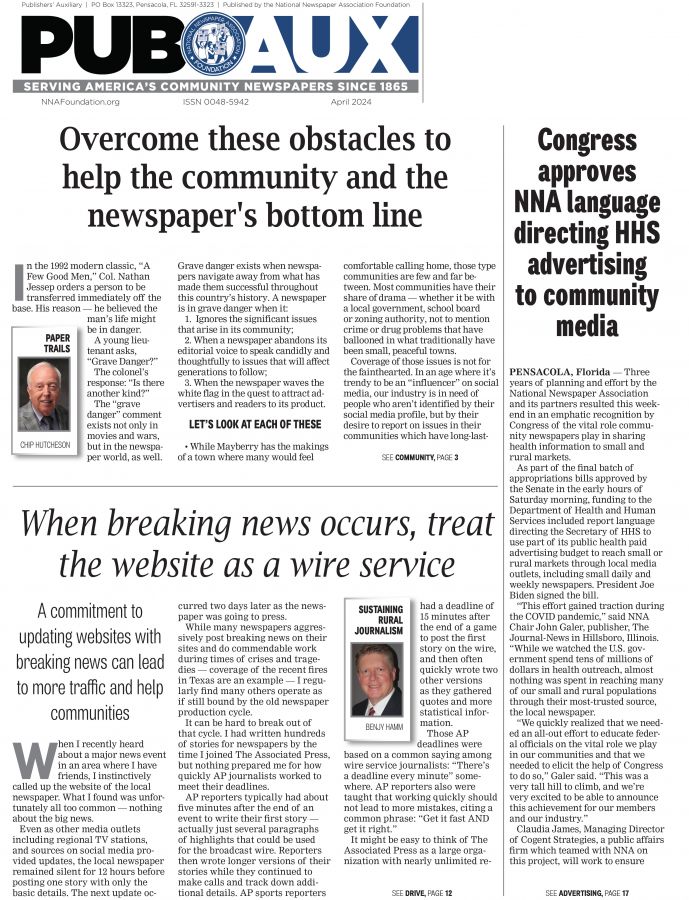Fun facts about Charleston and South Carolina
Sep 11, 2012
The clock is ticking away and so is your opportunity to register for the National Newspaper Association’s 126th Annual Convention & Trade Show in Historic Charleston, SC. Charleston is rich in history dating back to 1670. Thanks to forward thinkers back in the early 1900s, much of Charleston is preserved with thousands of historic buildings and sites. Walking through the historic district is like taking a step back through time.
Charleston has survived the American Revolution, the War of 1812, and the Civil War as well as pirates, hurricanes and social revolutions. She still bears the scars—yet a spirit of renewal makes this city special. The people who call Charleston home are a gracious, proud group, who take tremendous care in the preservation of the past and the hope of the future. Historic buildings are so well preserved they look as if they were built yesterday. In its heyday, Charleston was the wealthiest and most cosmopolitan city in the colonies—loaded with rich merchants and plantation owners. As it is today, Charleston of yesterday was a tourist destination, attracting visitors with its culture, wine, dancing, and imported luxuries.
Here is some fun trivia and facts about Charleston and South Carolina. Pay attention there may be a test later.
Charleston boasts the first public college, museum and playhouse in the U.S.
George Gershwin composed his well-known opera Porgy and Bess while living on Folly Beach, SC. Porgy and Bess are buried in the James Island Presbyterian Church graveyard.
The first game of golf played in the U.S. took place in Charleston.
North America’s longest cable-stayed bridge spans the Charleston Harbor. The Arthur J. Ravenel Jr. Bridge connects historic Charleston and Mount Pleasant, SC.
The first shot to be fired in the Civil War was fired by Citadel Cadets stationed on Morris Island
The salamander was given the honor of official state amphibian.
South Carolina entered the Union on May 23, 1788, and became the eighth state.
The state dance of South Carolina is the Shag!
South Carolina is the nation’s leading peach producer and shipper east of the Mississippi River.
Before being known as the Palmetto State, South Carolina was known as, and had emblazoned on its license plates, the Iodine State.
After the Civil War, it is said that the North donated black paint to spruce things up. But black was Yankee paint so they found mixing two parts Yankee black and one part Rebel yellow produced the signature Charleston dark green.
A sea captain would spear a pineapple to his fence post to let friends know he was home safely and to please visit so he could regale his guests with tales of the high seas. The pineapple today is a symbol of hospitality.
Charleston calls itself the “Holy City” because of its many places of worship and skyline full of church steeples.
South Carolina was the first to secede from the Union and thus the federal postal system so; it had to print its own money and postage stamps.
These Charlestonians signed the Declaration of Independence: Arthur Middleton, Thomas Heyward Jr., Edward Rutledge and Thomas Lynch Jr.
Charleston’s first woman newspaper editor and publisher was Mrs. Elizabeth Timothy in 1739.
Charleston is the seventh largest container port in the U.S.
African slaves in the lowcountry created a language and culture they called Gullah. The word may have come from the Gola or Gora Tribes in Angola. The language was made official in 1939 and is creole-based with English as its main base.
The city’s first baseball team was the Sea Gulls, established in 1886, and now called the Charleston Riverdogs. Part owner and director of fun is actor Bill Murray.
Dr. Alexander Garden, a Charleston physician first imported “Cape Jasmine” from South Africa in about 1754. The flower was renamed Gardenia after Dr. Garden.
As early as the 1700’s, Limners (Traveling Artists) flocked to Charleston. Many were portrait painters like Samuel Morse, who eventually threw in the brush and invented Morse code.
The old city market was first a meat market. Buzzards “Charleston’s Eagle” once trolled the market for meat scraps and kept the pace clean and were protected by law.
The Isle of Palms was originally named Hunting Island and then Long Island, it’s thought to be at least 25,000 years old, and was first inhabited by the indigenous Seewee Indians.
Sweetgrass basket making has been a part of the Mount Pleasant community for more than 300 years.
On Nov. 2, 1954, Strom Thurmond became the first U.S. senator elected by write-in vote. Thurmond received 139,106 write-in votes to win his seat. He defeated Democratic nominee Edgar Brown, who received only 80,956 votes.
So pack your bags and get online and register TODAY to join NNA Oct. 4-7 for three days of education, networking with your peers, exploring all Charleston has to offer, social activities and lots of fun. Charleston weather in October is an average high of 77 and low of 56. The hotel cut off was Aug. 31 to get a rate of $150, but it has agreed to take reservations on a space available basis. If you have difficulty getting the rate, contact Cindy Joy-Rodgers at cindy@nna.org for options. See pages 13 and 14 for details on the program.







